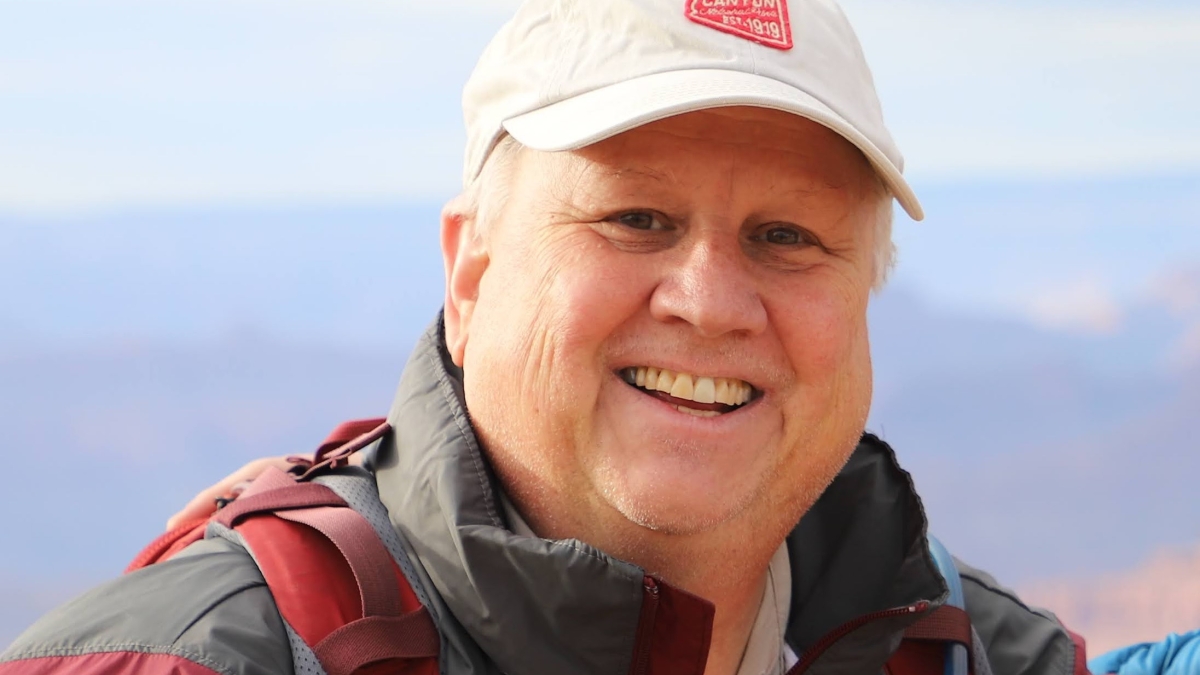Team receives NSF grant to advance Grand Canyon geoscience education, partnerships with Native tribes

Steve Semken, professor at ASU's School of Earth and Space Exploration. Courtesy photo
Researchers from Arizona State University, University of New Mexico and University of Arizona have been awarded almost $148,000 from the National Science Foundation (NSF) for a program titled Developing Partnerships Among Tribes, Geoscientists, and the National Park Service to Advance Informal Geoscience Learning at Grand Canyon.
The planning grant is from the Research on Learning in Formal and Informal Settings division (DRL) at NSF, whose mission includes promoting innovative research, development and evaluation of learning and teaching across all STEM disciplines by advancing cutting-edge knowledge and practices in both formal and informal learning settings. ASU is the lead institution on the 18-month, $147,758 grant, with the University of Arizona and University of New Mexico as collaborating institutions.
"It is long overdue for the geoscience and other natural-science interpretation programs at Grand Canyon to make all visitors better aware of the rich and diverse Indigenous knowledges of the Grand Canyon region, of their connections to this land since time immemorial, and of regional issues of significance to tribes with a geoscience connection, such as uranium mining and water resources,” said Steve Semken, project principal investigator and professor at ASU’s School of Earth and Space Exploration. “With this project, we intend to help foster Indigenization of interpretation at this park and many others.”
Semken will lead the collaboration with professors Laura Crossey and Karl Karlstrom from the University of New Mexico (UNM) and professors Karletta Chief and Cherie DeVore at the University of Arizona (UArizona).
The goal of the planning grant is to build partnerships to help shape a more equitable and inclusive place-based, informal geoscience learning plan for Grand Canyon National Park, which is visited by over six million people each year.
The Grand Canyon region is the homeland of 11 Indigenous nations, the traditionally associated tribes of the Grand Canyon, who hold sovereignty over the land and who possess rich, land-based expert knowledge of Earth processes and features there. However, that sovereignty and knowledge have historically been marginalized and largely excluded from geoscience education at the park. The ASU-UNM-UArizona team intends to foster a respectful, reciprocal and lasting partnership at the Grand Canyon among members of the traditionally associated tribes, the Grand Canyon Trust, Interpretive Park Rangers and Grand Canyon geoscientists.
The partnership will support ongoing efforts by Grand Canyon National Park administrators to involve tribal nations more directly in stewardship and governance at the park. It will form and carry out its work through in-person meetings in the park and at culturally and scientifically important places in and around the Grand Canyon, in tribal communities, if requested, and at times virtually.
The partnership will also produce written documents, including a summary of common goals, specific recommendations to the park and detailed action plans for Indigenizing future informal geoscience education at the park, upon which tribes will have greater input and oversight.
The model will be adaptable to other parks, and the project's products will be presented to park managers, shared widely with Indigenous communities and informal educators, and distributed in scientific publications and media. The project has received letters of support from Grand Canyon National Park and from leaders from several tribes, and expressions of interest from most tribal representatives to the park.
Karlstrom and Crossey led an earlier NSF project to create the award-winning "Trail of Time" geoscience exhibition on the South Rim of Grand Canyon, on which ASU was a collaborating institution and Semken was the ASU principal investigator.
This grant is in collaboration with University of Arizona and University of New Mexico. Supporting organizations include Grand Canyon National Park, the Grand Canyon Trust, Navajo community organizations and the Hualapai Tribal Council. Representatives of 13 tribal nations have also expressed interest in the project.
This press release was written by Dani Rae Wasche at the University of New Mexico with contributions from Kim Baptista at ASU’s School of Earth and Space Exploration.
More Science and technology

ASU professor honored with prestigious award for being a cybersecurity trailblazer
At first, he thought it was a drill.On Sept. 11, 2001, Gail-Joon Ahn sat in a conference room in Fort Meade, Maryland.…

Training stellar students to secure semiconductors
In the wetlands of King’s Bay, Georgia, the sail of a nuclear-powered Trident II Submarine laden with sophisticated computer…

ASU startup Crystal Sonic wins Natcast pitch competition
Crystal Sonic, an Arizona State University startup, won first place and $25,000 at the 2024 Natcast Startup Pitch Competition at…